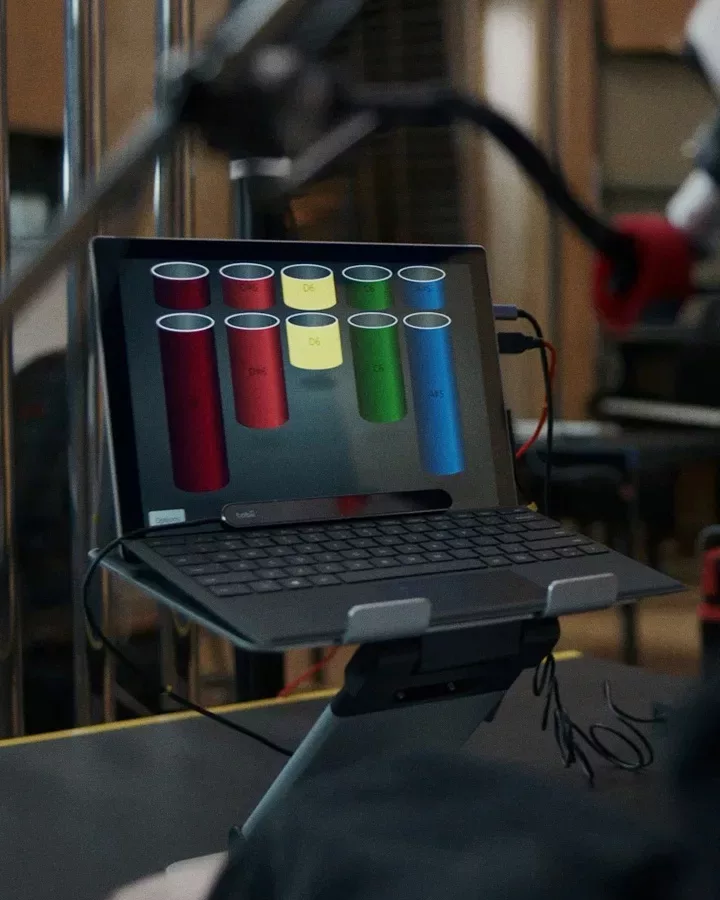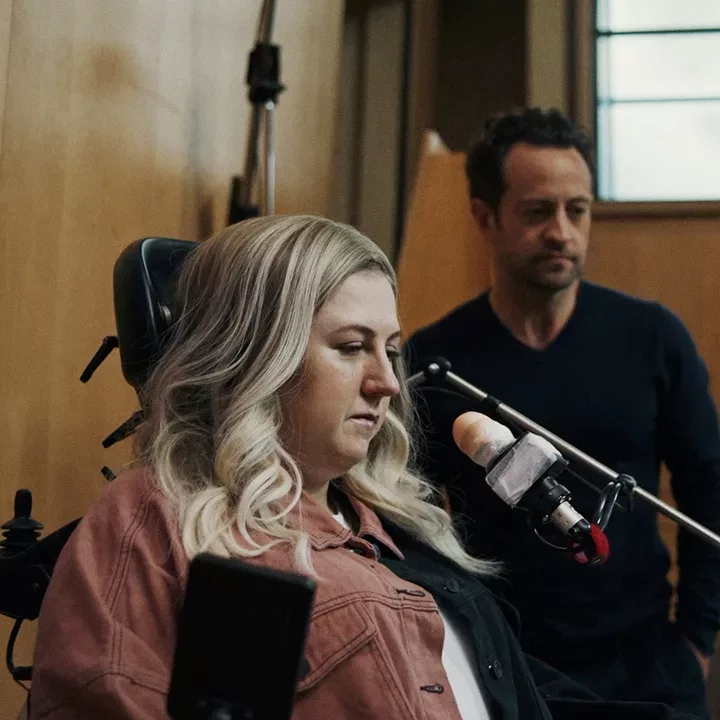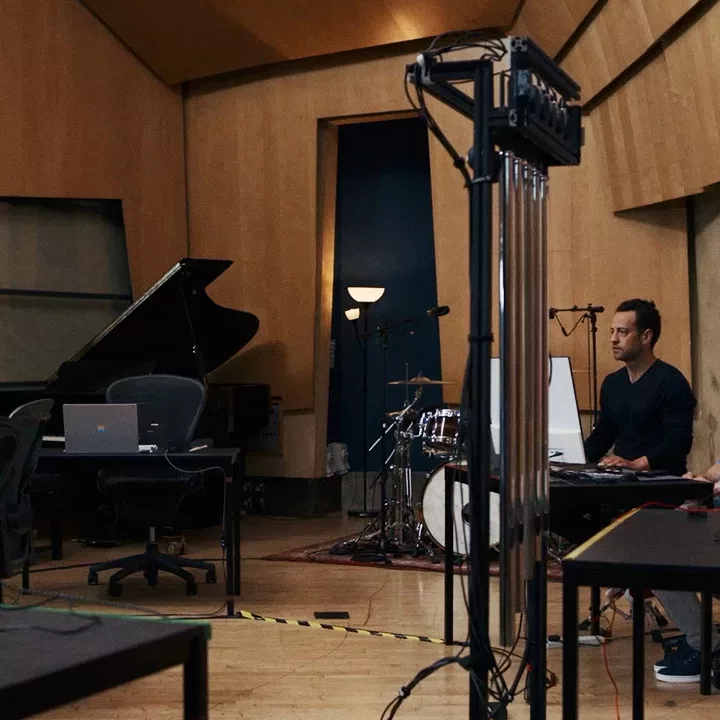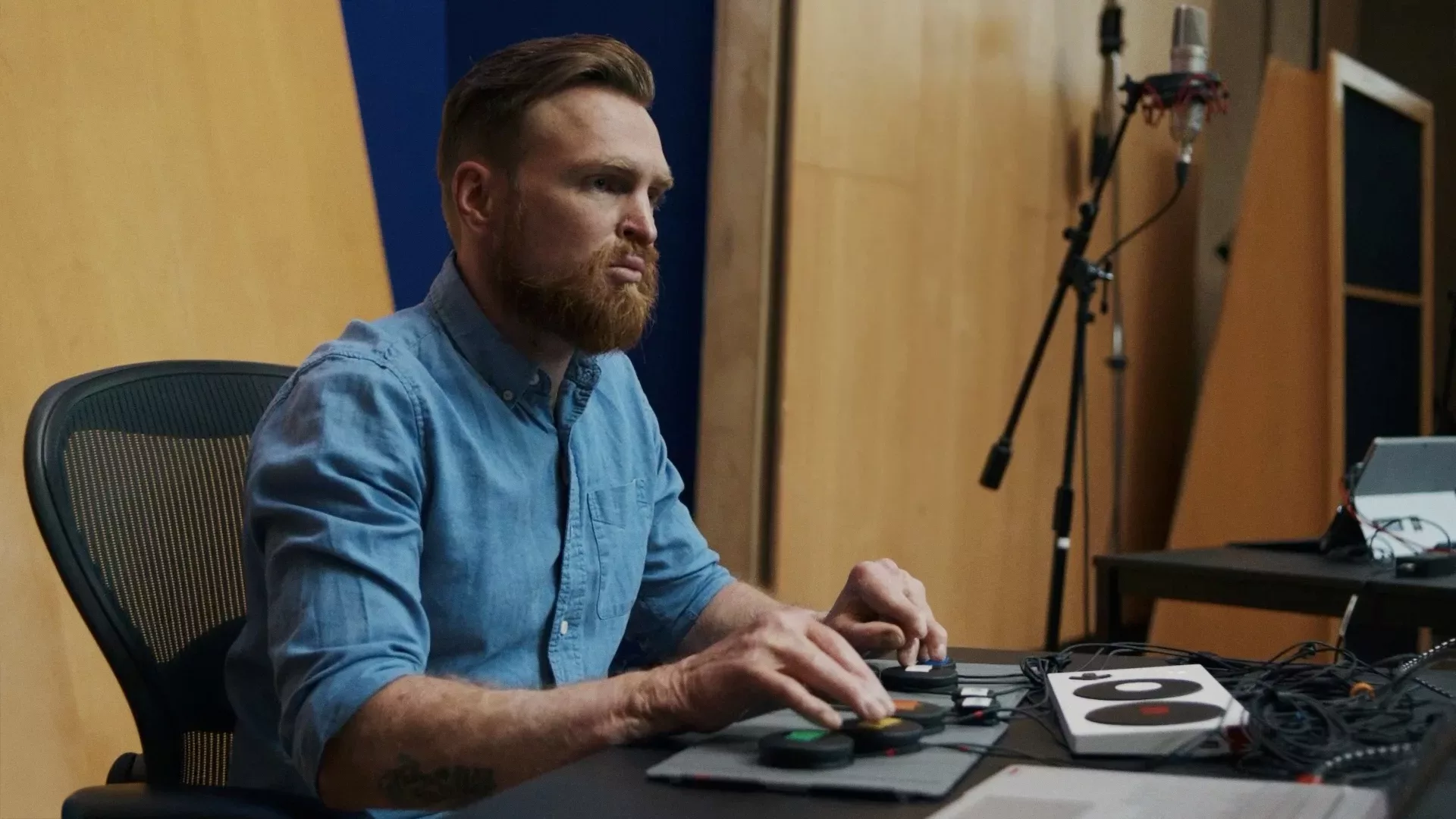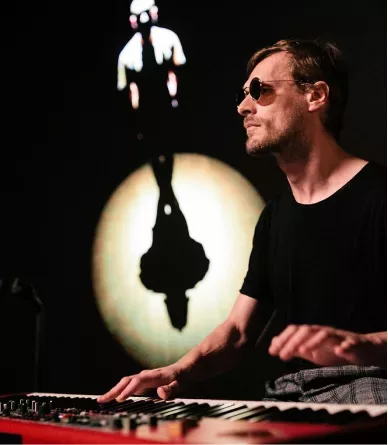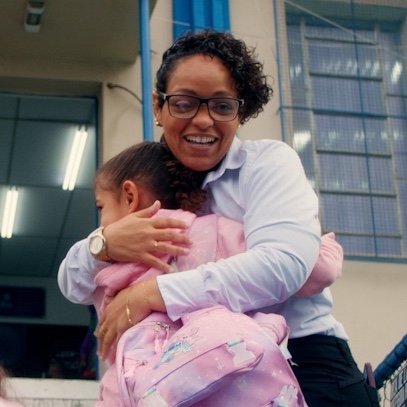Someone hurled a brick. Ping! Then rocks and debris rained down. Plink, plink, plink. Safe inside the tank-like vehicle, Karl Hinett could barely hear the impact over the roar of the engine. The armored hull was designed to withstand large caliber ammunition and land mines, so this barrage may as well have been confetti.
But suddenly, they were blinded. A well-timed projectile had somehow smashed the vehicle’s viewing sights.
Someone had to give sight to the crew. He was just 18 years old. A kid, really. Almost at the end of his first tour of Iraq, his crew was sent in to rescue two British soldiers imprisoned in Basra, when a demonstration flared up.
Hinett opened the hatch and raised himself up to get his bearings. Fire. He’d been hit by a Molotov cocktail. In a split second, he and the tank were engulfed in flames. Panic. “I just lost control,” Hinett explains. “There was no human thought behind what I could do, other than survive. ”Somehow, he managed to pull himself out and onto the ground. Blackness.
At a field hospital, he was put into a medically induced coma. Nearly 40 percent of his body had sustained third-degree burns.
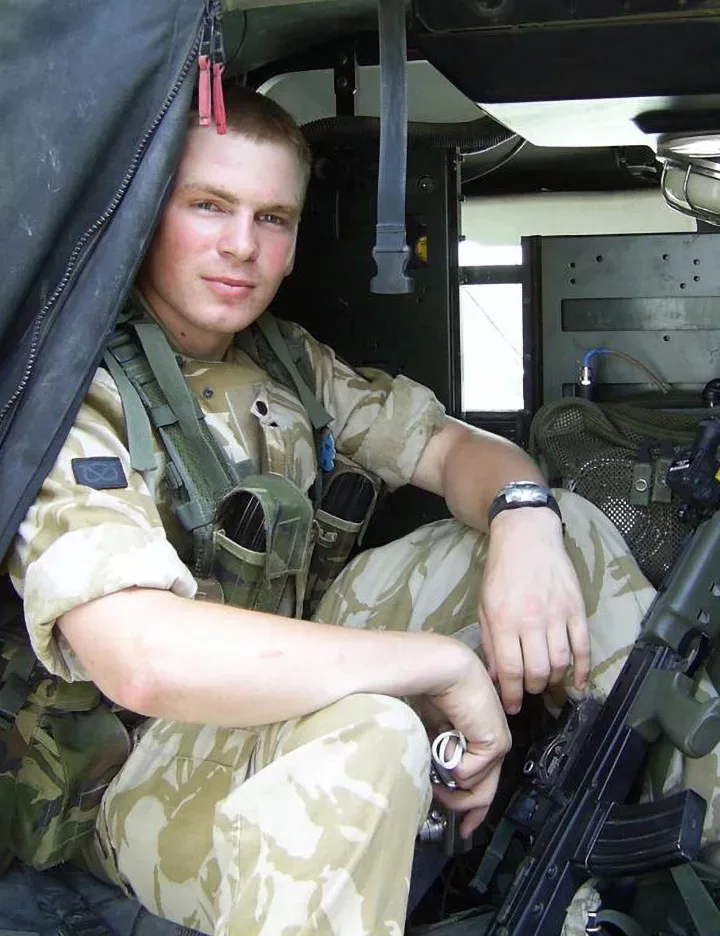
I remember a doctor giving me a squeeze on the shoulder, and then putting a mask on my face, and I went to sleep. I had no idea if I was ever going to wake up again… The pain was excruciating. It’s something I’ve never been able to describe.
The trauma Karl suffered on that day is tragically replicated across battlefields around the world. Soldiers leave conflicts broken in countless ways, and spend their remaining years struggling to perform tasks that would have been trivial before their injuries.
One of the things that the war stole from Hinett was his ability to play guitar. He first started learning the instrument as a teenager, but the extensive damage to his hands — a result of him gripping onto the burning metal to pull himself out of the vehicle’s turret — made it all but impossible to play.
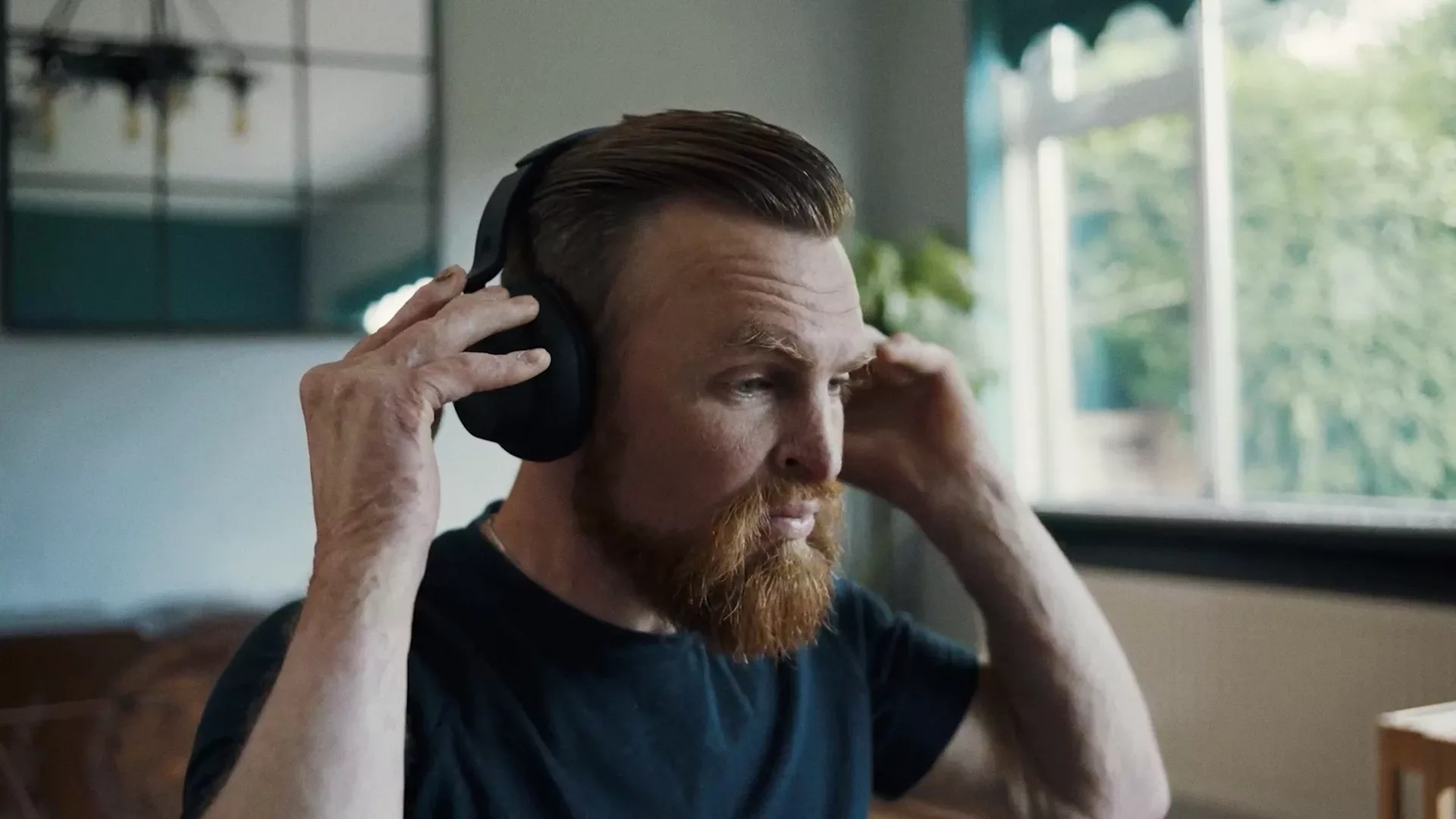
Fifteen years later, Hinett played guitar for the first time since his injury. Only it wasn’t a guitar – it was a button. Inside that button was an orchestra which could be tuned with a tap. He and a group of fellow injured veterans gathered inside a studio custom-built for their needs, where they found within themselves an ability they thought they’d lost forever.
It matters not how straight the gate, how charged with punishments the scroll… Early on in his recovery, Hinett found that pushing himself past his limits gave him a surprising boost, both mentally and physically.
“I couldn’t feed myself. I literally couldn’t do anything,” he explains. “I could barely walk, but I kept building on that, because every time I did it, I was getting a bit stronger, and that was something I had control of.”
To stay motivated, he promised himself that he would do something he hadn’t done before his injury. And less than two years after his accident, with his arms still heavily bandaged, he completed the London Marathon.
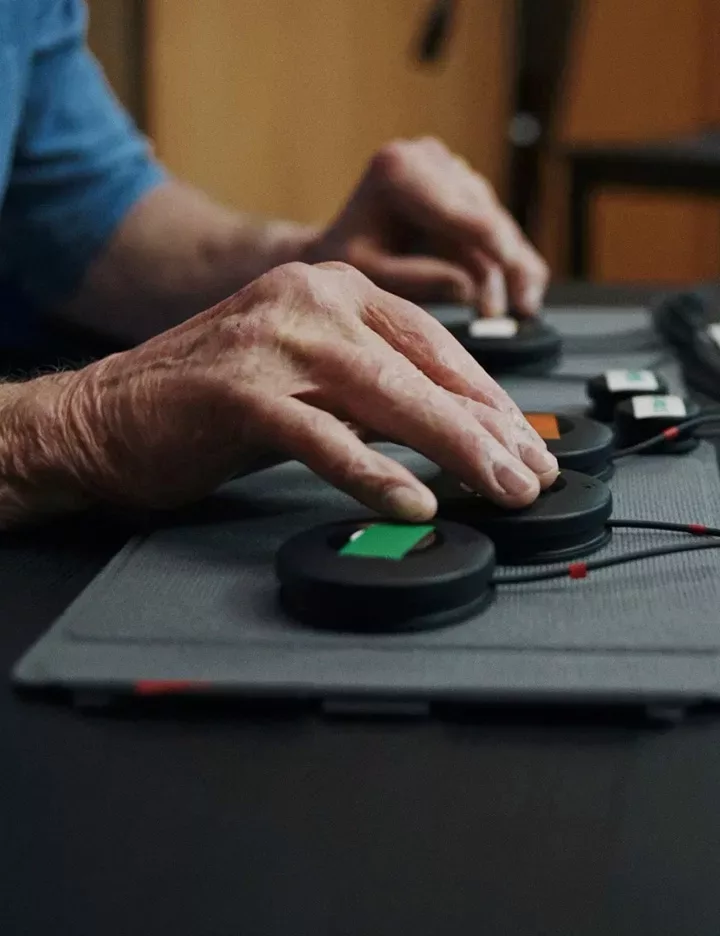
Invictus Games is an international sporting event for wounded, injured and sick servicemen and women, both serving and veterans.
And in 2018 he represented the UK in three running events at the Invictus Games — the international sporting event for wounded, injured and sick (WIS) service members founded by Prince Harry. He won a silver medal in the men’s 1,500 meters.
The Invictus Games invited Hinett and other wounded veterans to collaborate on an anthem for the upcoming competition. The Games had teamed up with Microsoft to provide the musicians with assistive technologies.
Hinett sat down at a small table with monitors and Microsoft’s Adaptive Controller, an array of buttons that could be easily moved around on a pad.
Hinett adapted the array in just a few moments, situating buttons where his fingers could easily reach. As he pressed, note indicators lit up on the screen in front of him – G minor, F, E flat. Thrum thrum thrum.
The rich sound of a guitar flowed from speakers to fill the room. Hinett smiled at the sounds he’d just made. “That’s pretty cool,” he said.
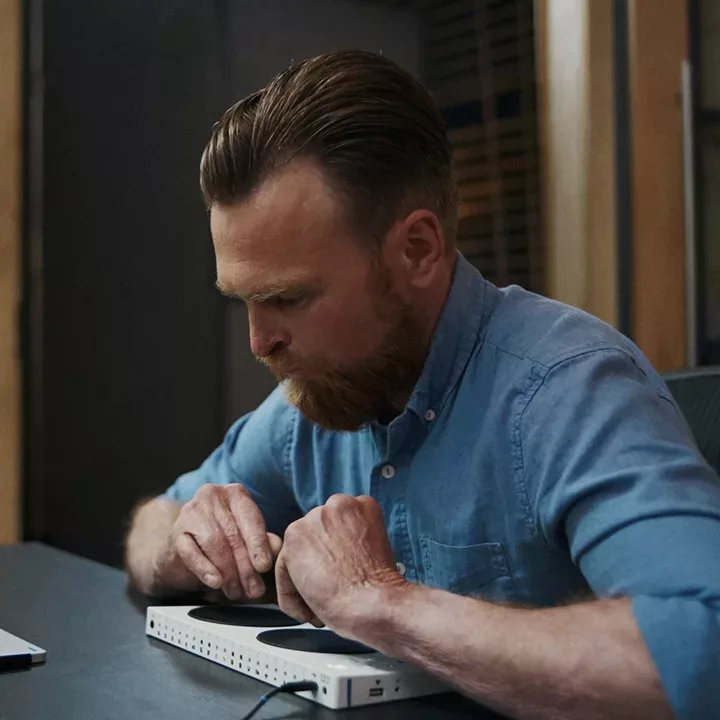
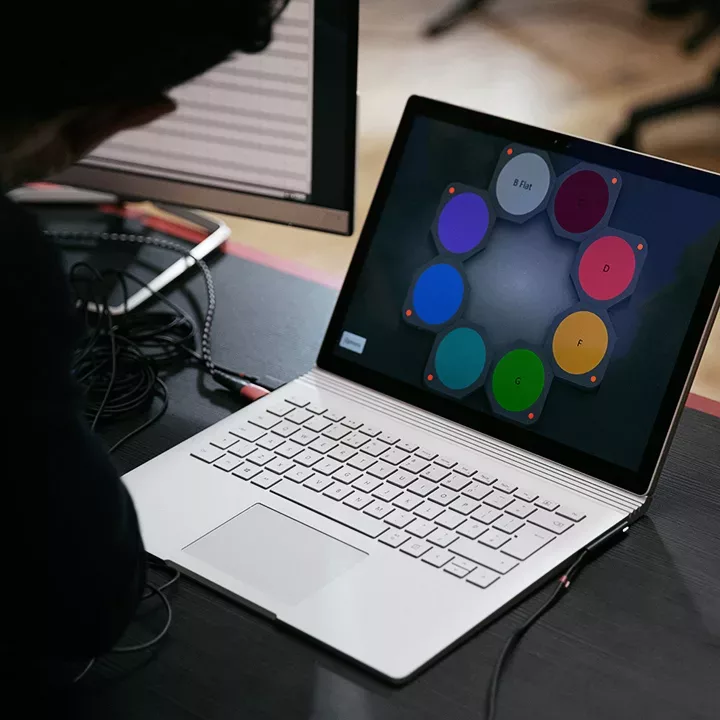
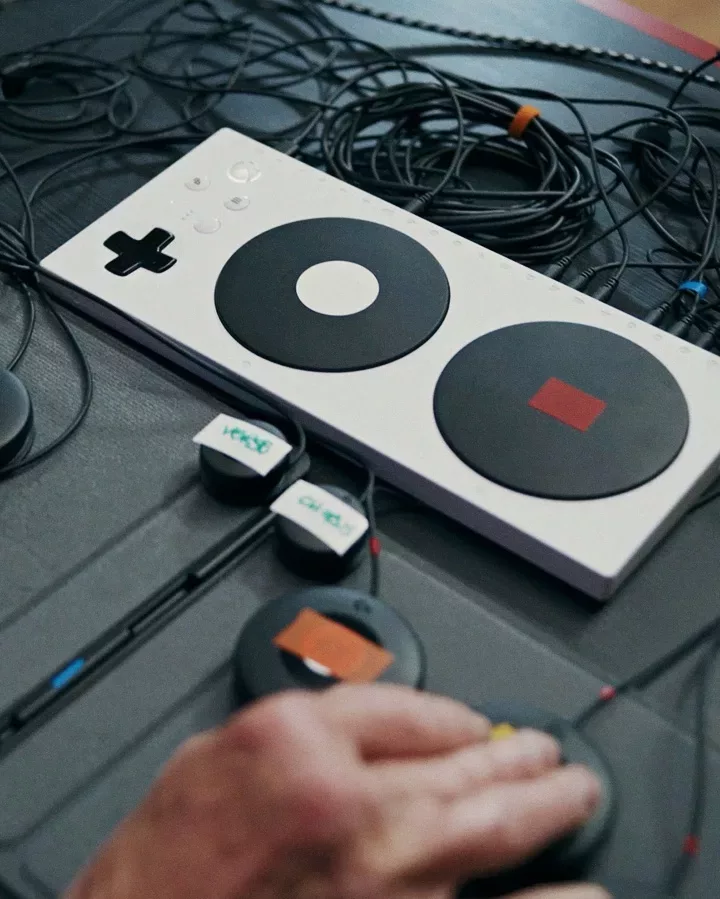
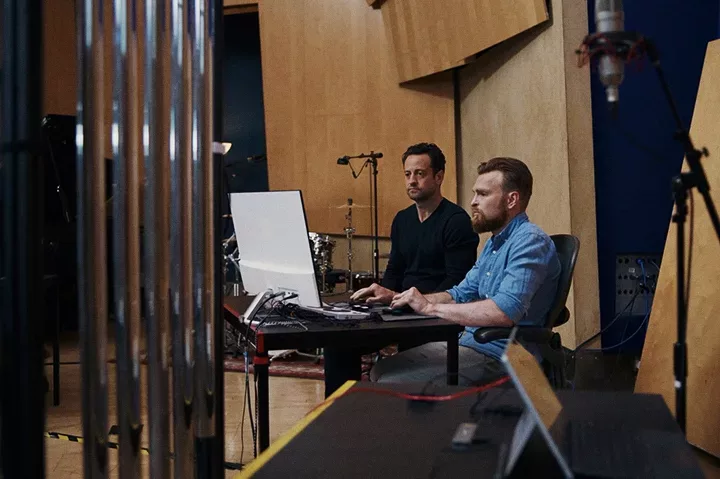
Across the room, Emma Lumb sat in front of a set of tubular bells. She’d suffered a serious neck injury in a traffic accident during her time in Iraq as a lance corporal in the British Army. She was paralyzed from the neck down.
But in this studio, she could play with her eyes. They darted across the screen in front of her, eye-tracking software following every move. The computer registered where her gaze came to rest on digital representations of notes – D6, then C6 – and fired a signal off to a robotic mallet. Bong! Bong!
Chimes rang out, mixing with Hinett’s guitar. Lumb was nervous before she entered the studio.
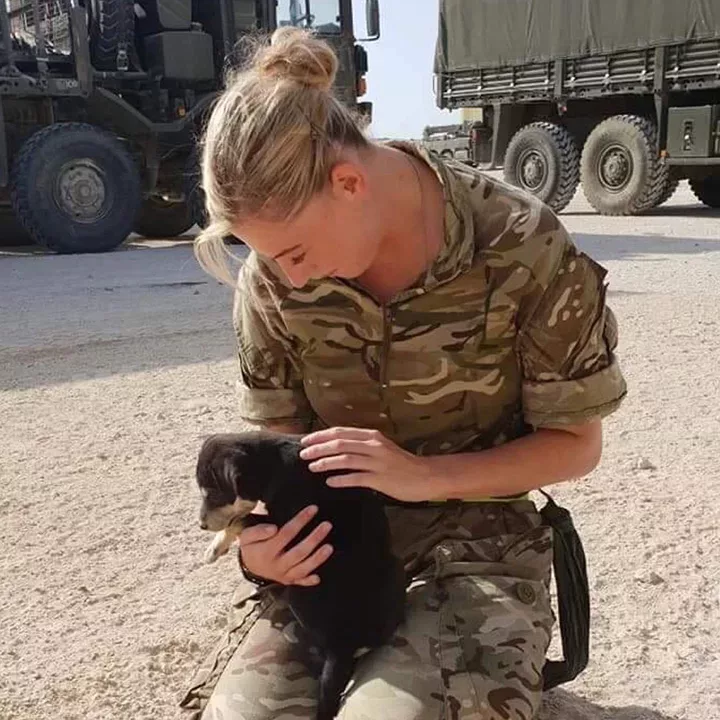
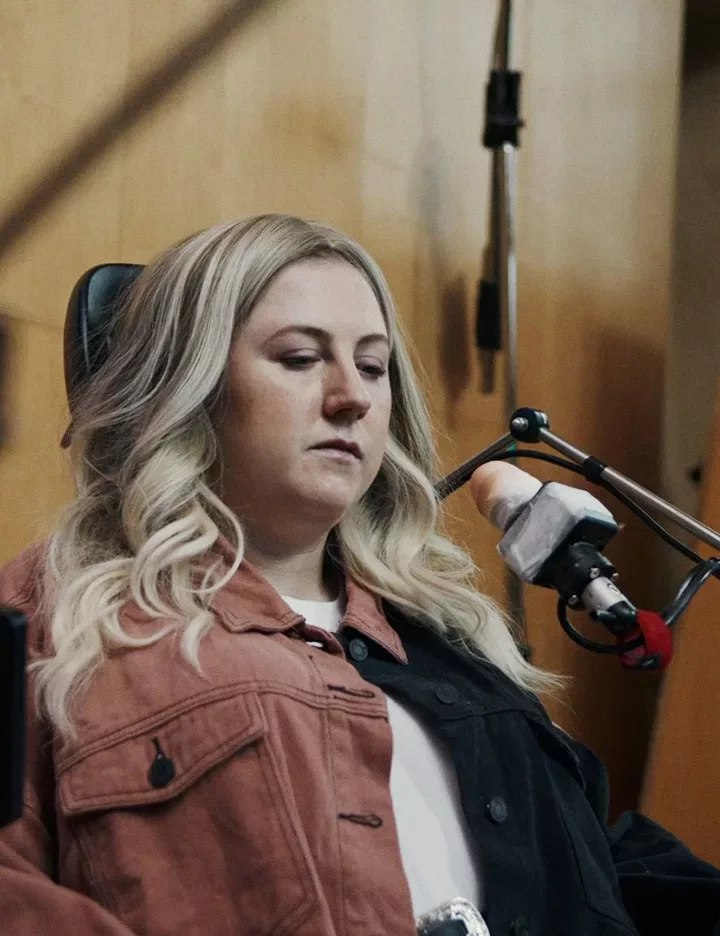
I am the master of my fate, I am the captain of my soul.
“We like to work on problems that people think are impossible,” says Ann Paradiso, principal research designer at Microsoft Research’s Enable Group.
For the last several years, Ann and her colleagues in Microsoft Research have leveraged technology and human-centered design to identify ways to help improve quality of life for people with speech and mobility disabilities. Her team initially focused their efforts on exploring independent mobility and ways to make communication faster, more reliable, and more expressive for people using alternate inputs such as eye tracking, head tracking, and combined inputs. For example, they’ve worked collaboratively with members of the ALS community to build an eye-controlled wheelchair, an expressive text-to-speech keyboard, a series of accessible games designed to help users gain fluency with eye trackers and other accessibly inputs, and developed the native eye tracking support in Microsoft Windows.
You don’t really know what you can do until you get put into these situations, and then, you get a sense of relief when you realize you can do it. It’s a proud feeling to be asked, and to be able to do it as well.
They’ve also been working on a series of inclusive, multi-modal music interfaces, which has led to innovations in other areas of expressivity and communication. Ann founded the Hands-Free Music Project in 2017 with the goal of restoring creative and expressive channels for people with severe motor impairments, which may also involve speech loss. The team has collaborated with academia, artists and members of the disability community to prototype experiences that enable live performance, composition, and musical collaboration for musicians of all abilities.
We already knew we had a wheelchair you can drive with your eyes,” she says. “How do you do a drum roll?
Over the last few years, the Hands-Free Music team has created an eye-controlled step sequencer, which allows users to both program and loop a melody or rhythm track, a synthesizer that can be played from a keyboard or touch screen, as well as with ones eyes, and the Galactic Bell Star, an inclusive, expressive set of tubular bells that can be played with a number of alternate inputs. They also built a suite of bespoke, MIDI-based software interfaces that pair with adapted controllers, like buttons and joysticks, to allow musicians to control music expression. This is the research technology that the veterans encountered when they entered the studio.
Image carousel
I can’t think of anything else that would give these people the opportunity to express themselves musically like this. On the surface it sounds really complex, but it’s actually quite easy once you know how to use it. To be able to hear those sounds from a guitar, which I made is quite surreal.
“During the early stages working with Ann, it was really apparent there would be no limits,” says Davey Williamson, the music supervisor overseeing the new version of the anthem.
“The most interesting bit of technology is what we’re calling an ‘expression controller’,” he continues. “This may allow everyone to change the musical expressions of what they’re playing with their eyes or with adaptive controllers.”
Pianissimo. Soft and delicate.
Fortissimo. Brash, triumphant shouting!
Vibrato. Pulsating, effortless.
The soaring strains of the finished anthem reverberate throughout the studio
Choir vocals resonate. Plaintive strings soar. Snare drums march. Stately horns breathe in a soft, low register. Defiant bells chime toward a crescendo.
The musicians marvel at what they’ve accomplished. To be able to create, to emote, to proclaim in defiance of the hand that life had dealt them, “I am the captain of my soul,” is a triumph the heights of which few of us will ever experience, and the athletes who boldly step up to participate in the Invictus games will join their hearts with this proclamation for years to come.
Throughout this project, the Microsoft Research team was motivated by a belief that music can heal, empower, and connect, and that innovative technology and human-centered design can break down the barriers that mobility and movement limitations present to musicians. The code that powers the tools they developed is anticipated to be released on GitHub. The team hopes that by open-sourcing the tech in the near future, others will be able to build on this vital work. Because innovation can come from anywhere.
Learn more about the Microsoft Hands-Free Music Project
